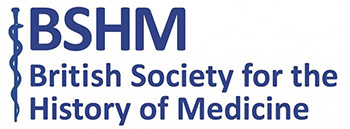On 25thApril, 1891, five-year-old Beatrice Saunders, drowsy and delirious, was brought to London’s Royal Free Hospital by her mother. Louisa Aldrich-Blake, a 25-year-old medical student, later to become an eminent surgeon, spent the next 10 days patiently documenting the progression of the little girl’s illness in her casebook (shown below). Beatrice died of tuberculous meningitis on 4thMay 1891. Aldrich-Blake’s casebook provides us with a valuable lens through which to view the education of a nineteenth-century female medical student.

Aldrich-Blake’s casebook, Wellcome Library, MS 5794.
This casebook is part of a collection of Louisa Aldrich-Blake’s clinical notes, written between 1887 and 1908, presented to the Wellcome Library in 1926. It documents a number of patient cases that Aldrich-Blake observed as a student on the wards.
Much of Aldrich-Blake’s documentation is in keeping with Nicholas Jewson’s concept of late nineteenth century ‘Hospital Medicine’. This can be appreciated in Aldrich-Blake’s record of a complete medical examination on admission of the patient to hospital. She adopts a logical systems-based approach: ‘nervous system’, ‘alimentary system’, respiratory system’ and ‘circulatory system’ are all examined thoroughly.
There is an overwhelming preoccupation with statistical analysis by way of patient observations in Aldrich-Blake’s account. Numerical data features strongly – the number of respirations, the heart rate and the temperature being specified several times. This is further emphasised through the inclusion of the patient’s observation chart (see below). In one sense, this renders the text obsolete: the account of the deteriorating child is distilled down to numbers on a graph, an objective depiction of life and death.

Observation chart, Wellcome Library, MS 5794.
30 hours after the patient’s death, an autopsy was performed, and the findings described in great detail. Of the seven pages that Aldrich-Blake used in her casebook to record this admission, a significant proportion (one-and-a-half pages) was dedicated to the post-mortem examination. This is in keeping with Jewson’s view of pathological anatomy as integral to Hospital Medicine.
However, elements of Aldrich-Blake’s documentation also correspond with Jewson’s notion of ‘Laboratory Medicine’, for example in the testing and analysing of bodily substances. Aldrich-Blake recorded the results of Beatrice’s urine analysis in her casebook: ‘Urine: acid. No alb. No sugar. Abundant urates’.
Despite these unquestionable features of ‘Laboratory Medicine’, Aldrich-Blake’s account also contains some aspects of ‘Bedside Medicine’, notably a diagnosis achieved via the patient’s self-report of their illness. Given that the focus of this case is a five-year-old child, clearly the patient would not be expected to provide a history herself. However, the mother does give such a report, and Aldrich-Blake’s inclusion of this highlights its significance:
Quite well up till April 22nd, no previous alteration in temperament. In the evening after coming home from school complained of headache and shivered. Early next morning had a severe fit of coughing of a peculiar character. After this she vomited and continued to do so after food or medicine until admission to R.F.H on April 25th.
Aldrich-Blake’s casebook entry demonstrates co-existing elements of ‘Bedside’, ‘Hospital’ and ‘Laboratory Medicine’ as described by Jewson. This casebook is a rich resource for helping us understand the practices of nineteenth-century medical professionals. It also provides us with some insight into the somewhat nuanced transition from bedside to hospital medicine.

Wellcome Library, MS 5794, 5.r.
Further reading
Foucault, Michel. The Birth of the Clinic. Translated from the French by A. M.Sheridan. London: Routledge, 2003.
Jewson, Nicholas. ‘The disappearance of the sick-man from medical cosmology, 1770-1870’, Sociology, 10, no. 2 (1976), 225-244.
Pickstone, John. ‘Ways of Knowing: Towards a Historical Sociology of Science,Technology and Medicine,’ The British Journal for the History of Science, 26, no. 4, (December 1993), 433-458.
Lucy Havard





